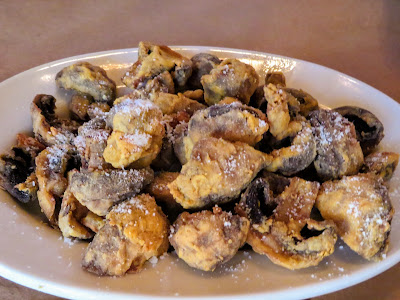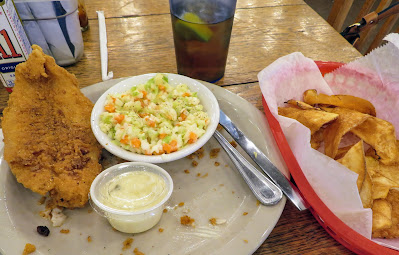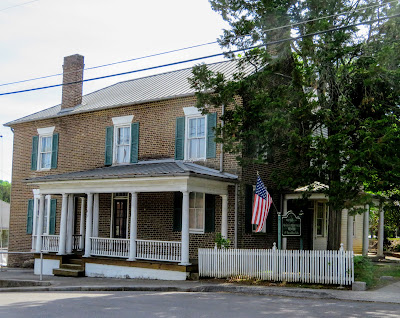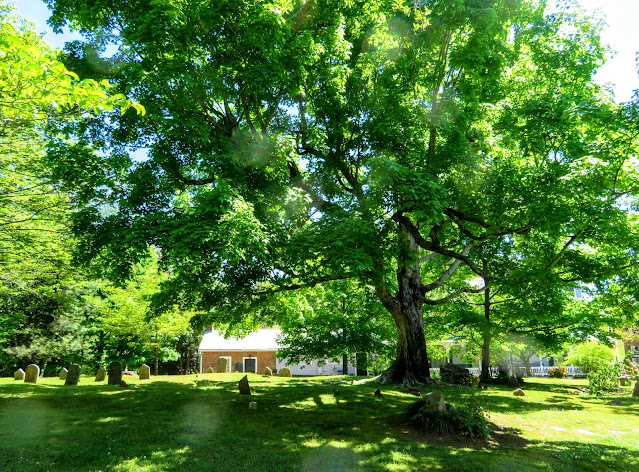Continuing
on our first all-day drive since the pandemic started... In the first post about this bit of
exploration, I was writing about our stop in Dandridge and I’ll finish that
part of the adventure in the beginning of this post.
I did
forget to mention that Dandridge hosts a farmer’s market in the downtown from
May through most of November. It was
actually our first stop upon arrival in town… To learn more about this farmer’s
market, go to Dandridge Farmers Market - Home | Facebook.
FYI, I’d
never mentioned the size of Dandridge… The town has an estimated population of
a little more than 3,200, and it is growing.
What are the odds that two well-known professional wrestlers lived in a small
town like this…and one of them of Japanese ancestry! Mr. Fuji, aka Harry Masayoshi Fujiwara
retired in the area. Kane, aka Glenn
Thomas Jacobs is currently the Mayor of Knox County Tennessee.
The town
may prefer to be thought of as the home of Air Force Brigadier General Norman
Gaddis. A highly decorated member of the
military, he was a prisoner of war in Vietnam…at that time he was the highest ranking
American imprisoned. Currently, he is 97
years old…
I’d ended
the last post with a photo and some information about the Roper Tavern, one of
a number of taverns/inns that were established to cater to the boats plying the
French Broad River or traveling via stage coach between Virginia and Tennessee.
Colonel
Roper built the tavern in 1817 and in 1820 he started construction of this home
right across the street. It was a
wedding gift for his daughter Mary and her husband-to-be, John Branner. The home was completed in time for the
wedding which took place in April 1821.
Bricks
for the house were fired on site as hand-made bricks were too fragile to
survive a wagon trip along the area’s rocky roads. To provide heat, the home had nine
fireplaces, of which seven have survived.
The house even had a dumb waiter so food could easily be moved from
floor to floor.
Both
Colonel Roper and George Branner held slaves.
Branner was ‘willed’ a personal slave by his father. His name was Nimrod his function was to help
George Branner up and down the house’s steep steps. George had a congenitally defective hip…
George and Mary’s son, John Roper Branner, who was born in this house, later
became President of the East Tennessee, Virginia and Georgia Railroad, later
known as the Southern Railway.
This
handsome 200 year old mansion is now the home for “The Shoppes at the Roper
Mansion”. Go to http://ropermansion.com/the-shoppes/.
You may
remember Shadrach Inman from my previous post about Dandridge. He was the original builder/owner of the
Shepard Inn. He also built homes for
both of his daughters when they were married.
This is the Bradford-Hynds House and it was built for Shadrach’s
youngest daughter, Elizabeth.
During
the Civil War the home was used as a makeshift hospital and at various times
served as both Confederate Army and Union Army officers’ headquarters. Several skirmishes occurred in the area,
including one that is referred to as the Battle of Dandridge. On the Union side, General Samuel D. Sturgis
commanded 26,000 troops and the Confederate Army was under the command of
General James Longstreet. Casualties
totaled roughly 250 counting both side’s losses. The Confederate Army won this particular
engagement. To learn more about this
skirmish and other local actions, go to https://en.wikipedia.org/wiki/Battle_of_Dandridge.
Currently
the Bradford-Hynds House is operating as the Dandridge Mercantile with a
variety of items for sale. They are also
trying to develop a small museum on site.
To learn more about this store, just go to https://www.facebook.com/dandidgemercantile/.
Even
though this is a relatively new building, the Tinsley Bible Drug Store is
perhaps the best know structure in Dandridge.
Founded by Dr. P.A. Tinsley and his nephew in 1911, the store opened as
a small pharmacy in the downtown area.
In 1942, business was so good that the company purchased the store next
door so they could expand.
I
included the photos above just to give readers a sense of the place, somewhat stuck
in time…except for some of the products and a modern operating pharmacy.
The lunch
counter and the old wooden booths were part of that expansion back in
1942. The lunch counter/dining area has
a reputation for southern food and hospitality.
The favorite sandwich is the “Bible Burger”, and of course it has to be
accompanied by a milk shake.
Unfortunately, due to Covid-19, the lunch counter/restaurant was
closed.
To learn
more about this local landmark and to check out their menu, just go to https://tinsleybibledrugs.com/.
It was
past lunchtime and we had to find somewhere to eat. I’d done a bit of research and the Millstone
Restaurant and Country store seemed like the best option. I’m sure that Covid-19 had a serious impact
on their business… On line photos show a significant deli counter/cooler and a
variety of food and gift items for sale.
None of these items were evident during our visit. The photos need updating. Too bad as Laurie was ready to shop!
We were
quite hungry when we got our food and I forgot to take a photo before we dug in. This is what was left of Laurie’s meal by the
time I took a picture. Our waitress had
recommended the Southern Fried Catfish ($12.95) and it was very good. Like many restaurants in the current
employment environment, this restaurant was understaffed and the kitchen was
slow. Fortunately we weren’t in a big hurry. The other good news is that I had a big catfish
filet to take home!
The
Millstone Restaurant is located at 1531 East Hwy 25/70 outside of
Dandridge. Phone: 865-397-2254. They are on Facebook but the following site
does provide a menu: https://www.swannsmarina.com/millstone-restaurant/.
Following
our exploration of Dandridge and our late lunch I headed north a bit to
Morristown Tennessee. My goal was the
Crockett Tavern Museum, a history museum that commemorates American folk hero,
David “Davy” Crockett.
I should
have researched my destination a bit more… First of all, due to Covid-19 it is
closed with no set re-opening date.
Secondly, the museum’s main building is this log cabin structure that
was built in the 1950s as a representation of the tavern that Davy Crockett’s
father, John Crockett established in 1794 at about the same location. This museum was opened in 1958, when the
craze over Davy Crockett was at its peak.
Back in
1955, I clearly remember standing in a long line outside the Michigan Theater
in Jackson Michigan with my brother Robert waiting to see the movie, “Davy Crockett, King of the Wild Frontier”
starring Fess Parker. I was 13 and
Robert was 7.
Davy
Crockett grew up in East Tennessee. He
had quite the reputation for hunting and telling stories. He was made a Colonel in the militia and was
subsequently elected to the Tennessee State Legislature and the United States
Congress where he ran afoul of President Andrew Jackson, especially over the
Indian Removal Act. Eventually he
angrily left Tennessee and headed to the Mexican State of Texas. The rest is history…or is it? He was alleged to have died fighting at the
Alamo but others claim that he and others were taken captive and then executed
by the Mexican Army.
From the
closed museum, I decided to take a look at Morristown’s National Register
Historic District. The city is home to
over 30,000 residents and its metropolitan area numbers over 142,000
people. Morristown is the home of the
only overhead sidewalk system in the USA.
It’s called the Skymart district.
The Morristown area was first settled in 1787 and Main Street was first
reported to have been built in 1792-1793.
Like most
cities, the downtown district suffered severe losses as suburban malls and
super-stores were built on the outskirts of town. So the city developed a plan to modernize Main
Street by creating the “overhead skywalk”.
Unfortunately, the Skymart ended up like so many idealistic urban
renewal projects in the 1960s…it failed to revive anything. Currently, new efforts are underway to
increase visitors and shoppers to downtown Morristown. It looked like a farmer's market or some type of festival was underway when we drove through. We decided not to stop due to timing...
I
couldn’t find out too much about the old jail in Rutledge Tennessee. It was built in 1848 and I’m sure that as it
aged, it wasn’t the finest place to be incarcerated. The town is the County Seat for Grainger
County, an area famous for its tomatoes and an annual Tomato Festival. The town was incorporated in 1797 and today
it has about 1,355 residents.
I did
pick up a couple of odds and ends about the jail and its Sheriffs. One contributor wrote that his wife’s
grandfather and grandmother were both Sheriffs in the county and they lived at
the jail. His grandmother cooked all of the
inmate’s food. Given the Sheriff’s term
limits, his wife ran and was elected…but of course, everyone knew that her
husband would be the Chief Deputy and would be doing the police work…
The other
story is a bit more compelling. Sheriff
Samuel Preston Greenlee (1844 – 1889) was a Union Civil War veteran who served
as a Sergeant with the 4th Tennessee Calvary Company C and who
served as Sheriff in Grainger County after the war.
Sheriff
Greenlee tracked an escaped prisoner to nearby Cracker Neck Valley where he was
hiding with another suspect. He demanded
that they surrender, but instead they opened fire and killed the Sheriff. One suspect was arrested the next day. Later a mob of angry civilians took him from
his cell and hung him. A 16 year old boy
tracked down the other suspect and shot him dead…
The Nance
Building is just up the street from the jail.
It is situated on lot #1 in the original plat of Rutledge. This Federal style structure was constructed
ca. 1840 for use as a commercial building with attached living quarters. As far as records show, it was probably used
as an inn or tavern until about 1857.
From 1857 until 1897, it became a general store. In 1897, it was transformed into a private
residence. Under the Nance’s ownership,
Mrs. Nance operated a restaurant on the first floor in the1940s and 1950s.
By the
1970s the building was falling into disrepair as the health of the owner
declined. When he passed in 1997, the
City of Rutledge bought the structure and grounds as part of its plans for a
historic center and public park. Today
the Historic Nance House Arts and Heritage Center is a museum and cultural
center developed to preserve Grainger County’s ‘storied history’. It doesn’t appear to be open at this time…
That’s
all for now. Just click on any of the
photos to enlarge them.
Thanks
for stopping by for a visit!
Take
Care, Big Daddy Dave























































